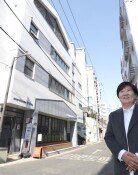Nuclear-powered submarine development is pursued hastily
Nuclear-powered submarine development is pursued hastily
Posted October. 07, 2020 07:28,
Updated October. 07, 2020 07:28
Kim Hyun-jong, the deputy national security advisor to President Moon Jae-in, visited the U.S. last month to explain the South Korean government’s plan to develop a nuclear-powered submarine and request the supply of low enriched uranium, nuclear fuel. Kim, however, was met with opposition from the U.S. Even though it was said that the U.S. provided an explanation in principle based on the non-proliferation principles, it is a forewarning of a difficult negotiation between South Korean and the U.S. regarding the plan.
The plan for nuclear-powered submarine development was officialized by being reflected on the mid-term national defense plan from 2021 to 2025 announced by the Ministry of National Defense in August this year since President Moon mentioned as a then-presidential candidate its introduction through the revision of the Agreement for Cooperation between the Government of the Republic of Korea and the Government of the United States of America concerning Civil Use of Atomic Energy. Securing the supply of nuclear fuel is practically a premise for the government’s plan to deploy a nuclear-powered submarine by the early 2030s. Without nuclear fuel, the plan is not feasible regardless of South Korea’s capabilities to develop a nuclear-powered submarine.
Looking for ways to secure nuclear fuel after revealing the development plan is a hasty approach as if showing the eagerness to announce the beginning of the electric car era without necessary batteries. Nuclear-powered submarine development is a project to introduce a strategic weapon to address North Korea’s new submarines equipped with submarine-launched ballistic missiles and check neighboring countries. Such an important project was announced without proper preparation for the first necessary step, only to cause domestic expectations and foreign wariness. The South Korean government must have thought that the U.S. will be easily convinced while there has been discord between the two countries due to South Korea's prioritization of North Korea and the U.S.
After achieving an agreement on the revision of the ROK-U.S. Missile Guidelines in July, the South Korean deputy national security advisor brought the nuclear-powered submarine issue to the surface, saying that the next-generation submarine will be equipped with a nuclear fuel-powered engine,. It remains unknown whether he sounded out the U.S., but the U.S. wouldn’t have reacted this way if there had been enough discussions with the U.S. or South Korea’s internal preparation. The South Korean government should reflect on whether it was naïve to assume that nuclear-powered submarine development will be an exception under the bilateral agreement on the civil use of atomic energy, which restricts the use of nuclear fuel for military purposes.
The nuclear-powered submarine pursued by the South Korean government, although distinguished from a strategic nuclear submarine equipped with nuclear missiles, is a powerful weapon that can operate for several months underwater. While the extension of missile ranges is in line with the U.S.’ strategy to deploy mid-range missiles in Asia, nuclear-powered submarine development needs to overcome the restrictions under the international principles for nuclear non-proliferation. The government should develop a carefully-designed approach to convince the U.S. and the international community based on a comprehensive strategy from now on.







